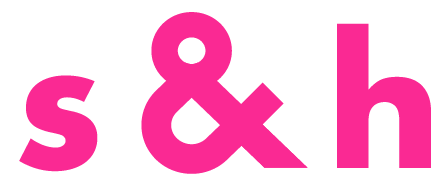Diversity and Inclusion from Cradle to Career
Play with your makeup
Consumers are looking to include aspects of their childhood in beauty. A micro-trend we’ve been tracking for a beauty client, participation as a premium, is about being able to interact with products in a meaningful way, whether building, mixing or customizing them on our own. lean beauty brand, C’est Moi also took note of this trend and created the Mellow Marshmallow Facial Mask. Those who indulge in this fluffy mix must first prepare it beforehand by crushing the tab and mixing it together with water. An element of childlike play is incorporated into these products reflecting our element of culture, Kidult, generational role reversal—adults are prolonging their childhood, or children are acting like adults.
These tactile effects allow users to engage with products in new ways that can associate brands with novelty and freshness. Take Korean Beauty brand, Hanacure, which provides à la carte ingredients for its facemask that users must combine on their own before application. With consumers willing to pay a higher premium for products that must be put together separately it’s no wonder brands are starting to deconstruct their products before hitting the shelves. We’ve found that consumers are placing a premium on brands that empower them to play a dominant role in the product journey. Our very own Director of Client Strategy, Mary Klindworth, dubs this Premiumization of Participation.
The next generation of diversity
In a special briefing with ADCOLOR on the Future of Diversity & Inclusion (D&I), we touched on the idea of “cradle through career” approach when it comes to preparing talent for the workforce, or diversity efforts that start in childhood and continue throughout a person’s career. Our platform Q™ showed that almost 40 percent of the conversation around education—indicating a need for an approach that goes beyond just working with entry-level talent. “We tend to focus on entry-level staff with lower salaries and higher attrition rates and turnover,” James Heighington, head of diversity strategy at Google said. He argues that we should be building a pipeline that nurtures talent much earlier than that, using Google’s elementary school coding classes as an example.
Starting from childhood, companies are laying a foundation for career growth and intervening in the systemic forces that hold back marginalized groups. Whether that’s access to training on hard skills, like coding, or perhaps access to learning soft skills like writing a professional email or learning self-confidence to avoid feelings of imposter syndrome. There are a lot of opportunities for impact in a cradle through career approach, for both the employer and future employees.
Companies are creating their own strategies for shaping the future of their business. We will see more approaches that emphasize out of the box solutions like these. “We really need to acknowledge the fact that if you are going to continue going to the same places, you’re going to continue to get the same kinds of people,” said Camilo La Cruz, chief strategy officer at sparks & honey. So, how are we pushing ourselves to reach into new communities for new talent?
Turn your diversity switch to always-on
Neurodiversity is a lens of invisible diversity that can be easily lost in the conversation. However, one Yale study found that about 20 percent of the population is dyslexic, not to mention autism and ADD/ADHD which all fall under the umbrella of neurodiversity, as discussed during the Future of D&I briefing. Chief Diversity Officer of Omnicom and Founder and President of ADCOLOR, Tiffany R. Warren, emphasized this differentiation: “Diversity of thought isn’t the same as how someone thinks.” Our brains are wired in such a way that makes them specialist thinkers that bring variety and expertise companies might be unknowingly depriving themselves of because of how the hiring process, physical space, and work expectations are set up.
The future of work depends on recruiting and hiring specifically from neurodiverse communities. The Executive Director and Head of Autism at Work at JP Morgan Chase said that their autistic employees achieve 48 to 140 percent more work than their neurotypical colleagues, yet around 85 percent of college graduates on the autism spectrum are unemployed. There’s a huge market of neurodiverse candidates to tap into that can provide exponential value to a company. However, most companies aren’t aware of this potential, as 72 percent of HR professionals said that consideration of neurodiverse candidates wasn’t included in their people management practices.
We must be vigilant about who we are including and potentially excluding moving forward in our diversity and inclusion efforts. We must constantly have our diversity switch turned to always-on. If we only turn it on in moments where we can visibly see diversity then we leave a lot on the table in terms of the talent we are attracting to our offices.
Chelsea is a Cultural Strategist at sparks & honey, working with clients across several categories from finance to tech to healthcare. Having relocated to NYC in February she is slowly discovering the restaurant scene as they start to reopen. She is also spending her weekends in October as a cheerleader for her friends’ intramural kickball team in Central Park. If she’s not there then you’ll definitely find walking around different neighborhoods, book in hand, looking for the perfect spot to lay down her blanket and read.


